Congratulations To Our Client Dana Hubbard of EMD Millipore Corporation
March 15, 2017
Hamilton Brook Smith Reynolds congratulates our client EMD Millipore Corporation’s, J. Dana Hubbard, on his outstanding leadership as head of patents. We are privileged to partner with Dana and the EMD Millipore legal team in protecting the company's advanced innovations, and we look forward to continuing to protect and defend EMD Millipore's intellectual property.
Dana was recognized in the April/May/June issue of American Healthcare Leader's (AHL) magazine on his success in IP. AHL brings together executives across the healthcare spectrum to address how to effectively lead their businesses and amid the changes reshaping the industry.
Read the full article on Dana, written by Russ Klettke, below.
Inventing Life-Altering Medicines
We expect our pharmaceuticals to cure us, and we’re thankful to the people of science who bring them to the market. But it’s lawyers like Dana Hubbard who are indispensable for turning ideas into medicine.
March 15, 2017
By Russ Klettke
An important part of the sometimes-contentious discussion on international trade agreements is the matter of international respect for patent protections. For healthcare professionals, this is not just a business matter, to ensure the innovators are given their just due in revenue flow—it’s also about patient safety.
Dana Hubbard, an intellectual property (IP) attorney who is head of patents for MilliporeSigma—the life science business of Merck KGaA operating in the United States and Canada—knows a great deal about the subject. The global manufacturer of life science tools for the pharmaceutical industry is not only a supplier to the critical research, development, and manufacturing functions at major pharmaceutical companies, (including its corporate parent, German-based Merck), but it also invests heavily in research and development itself.
The “do no harm” part of the Hippocratic oath is a first priority for the company. “We serve the largest companies in the pharmaceutical industry,” Hubbard says. “They, and we, have to be very careful about the supply chain.” Fortunately, the entire industry is getting more methodical about product cleanliness, he notes. For example, Chinese firms are bowing to legal and public pressure to honor other companies’ patents and ensure safer products overall.
But IP attorneys such as Hubbard do a lot more for their employers than litigating patent infringement. With a broad understanding of what already exists in the marketplace or in the approval pipeline, they advise senior management on where product gaps exist. And in the case of Hubbard, he is so involved in the development of products that his name goes on the patent.
Hubbard is a named inventor on eight patents to date, with another dozen or so inventions in the patent-review process. US patent law requires inventors to actually conceive of the invention, not simply contribute to or refine it. Hubbard’s degree of involvement meets these requirements, and he is named on the patents in the short list of inventors.
“This is not common, but it’s not unusual,” he says. “We have brainstorming sessions on the conception of the invention. Because I have a broad exposure to the many technologies in the industry, I advise the other inventors on what else is being developed.”
The knowledge required to be a named inventor of highly technical methods—e.g., “methods for cleaning a Protein A chromatography column employing a media comprising a Protein A ligand derived from the C domain of Staphylococcus aureus”—comes from Hubbard’s background in science. As with all attorneys admitted to the patent law bar, he holds a science degree, a bachelor of science in biology from the University of Massachusetts.
Hubbard started his career with the company, which at the time was known as Millipore Corporation, in 1997. Since then, Millipore was acquired by Merck KGaA (Darmstadt, Germany) and has made five acquisitions of its own. Its product line has grown from about 60,000 filtration-based products for pharmaceutical product development and manufacturing (and microelectronics, which led to a spin-off in 2001) to today, when it offers roughly 300,000 products and services including lab water instruments, consumables and services, cell lines, antibodies, microbiology and biomonitoring, test assays, analytical reagents, and flow-cytometry kits and instruments. The clients for these have evolved over time as the pharmaceutical industry has globalized and rationalized.
“The biopharma model has changed in recent years,” Hubbard says. “It used to be that R&D was conducted in-house. Now this is done by smaller start-ups, universities, and spin-offs from universities.” This contributes to faster innovation because entrepreneurial ventures that are fundamentally about R&D—for example, companies like Juno Therapeutics, MyoKardia, Spark Therapeutics, Apexigen, and Audentes Therapeutics—are not distracted by externalities more typically characteristic of larger corporations. Bigger firms still do some of their own R&D, but quite often, they’ll outsource the function.
Hubbard knew he wanted to combine his love of science with the law from a relatively young age. “With science you have very black and white facts,” he says. “I liked that. But with the law there are a lot more gray areas. I struggled with that at first.” That struggle ultimately led him to where he is today: working with eleven staff attorneys across the globe. Hubbard is also one of about sixty patent attorneys working for the various businesses of Merck KGaA. He encourages anyone interested in the law as well as science to consider a career in IP.
“The old joke was that an IP attorney was an engineer who went to law school at night,” he says. “Now, it’s PhDs from great schools who went to law school, and the characteristics of good IP lawyers include flexibility. Patent law means every day you’re learning new things.”
To view the April/May/June issue of American Healthcare Leader, please visit AHL's website.


